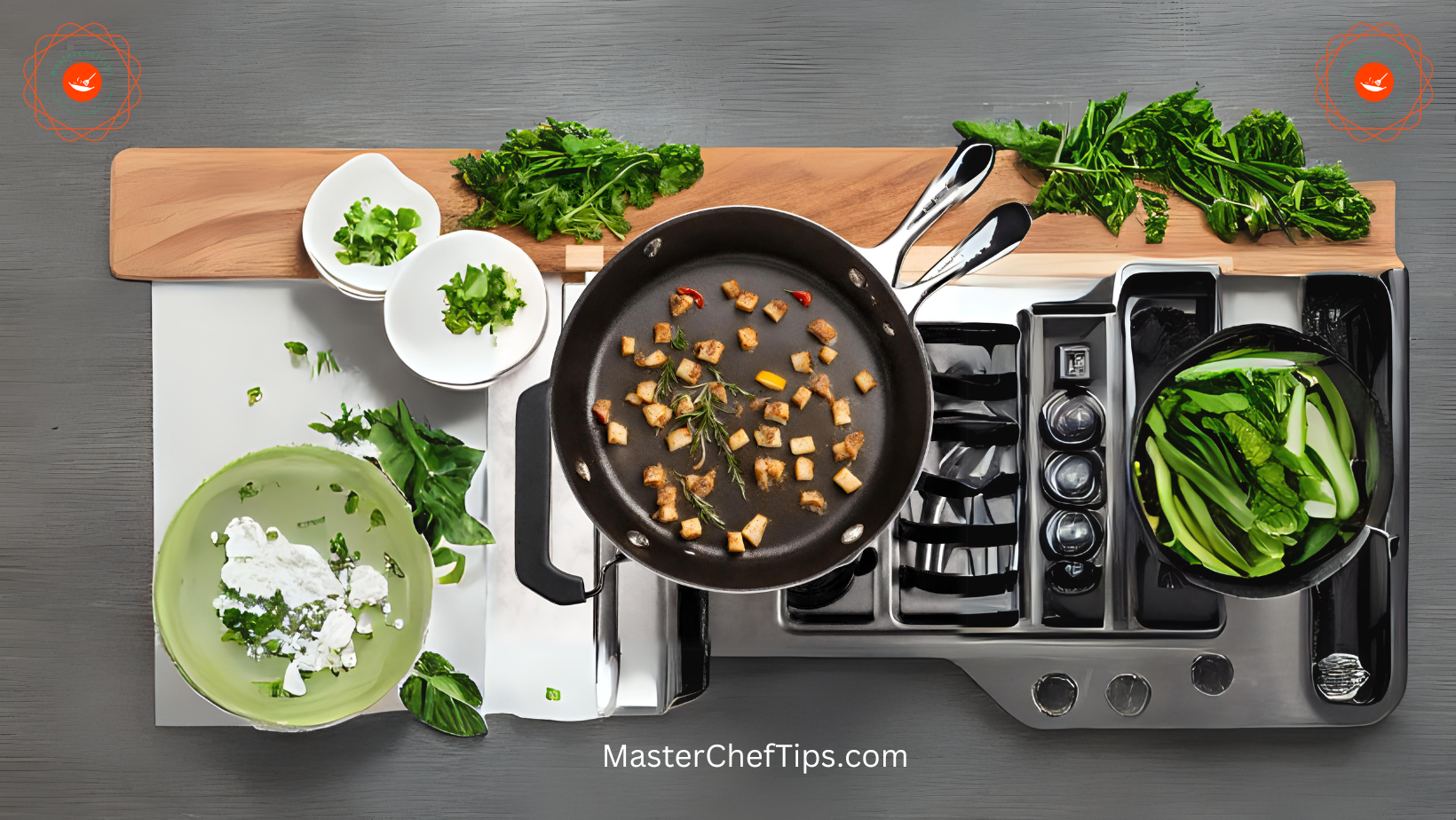
Sauteing Tips 101 : Your Guide to Delicious Food
Sauteing is a fundamental cooking technique that every aspiring home chef should master. It’s a quick and versatile method of cooking that can elevate the flavors of your dishes. In this comprehensive guide, we’ll provide you with essential sauteing tips for beginners, helping you achieve culinary success in no time.
Sauteing Tips:Choosing the Right Pan
Start your sauteing journey by selecting the right pan. A good-quality, non-stick skillet with sloped sides is ideal. This design allows for easy tossing and flipping of ingredients, ensuring they cook evenly. A pan with a heavy bottom is also advantageous as it distributes heat more evenly.
Sauteing Tips:Preheating the Pan
Before adding any ingredients, preheat your pan over medium-high heat. A hot pan is essential to ensure that your food sautes properly, achieving the desired caramelization and flavor. You’ll know the pan is ready when a drop of water sizzles and evaporates upon contact.
Sauteing Tips:Selecting the Right Oil
Your choice of oil is crucial for successful sauteing. Opt for oils with high smoke points, such as vegetable oil, canola oil, or clarified butter (ghee). These oils can withstand high temperatures without burning or producing a burnt taste. The right choice of oil can also complement the flavors of your ingredients.
Sauteing Tips:Preparing Your Ingredients
To ensure a successful saute, cut your ingredients uniformly. This uniformity promotes even cooking, so everything in your pan is ready at the same time. It’s a simple step that can significantly impact the outcome of your sauteed dishes. Consider the size and shape of the ingredients; smaller pieces will cook more quickly.
Sauteing Tips:Avoid Overcrowding
One common mistake in sauteing is overcrowding the pan. When the pan is overcrowded, ingredients tend to steam rather than saute. If needed, cook in batches to allow enough space for proper sauteing. The goal is to have a single layer of ingredients in the pan to ensure even cooking.
Sauteing Tips:Season as You Go
Season your ingredients with salt and pepper as you add them to the pan. This approach layers the flavors and enhances the overall taste of the dish. It’s a small step that makes a big difference. Remember that sauteed dishes require less salt than dishes prepared with other methods, so be cautious with your seasoning.
Sauteing Tips:Keep It Moving
Constant movement is key in sauteing. Toss or stir the ingredients frequently to prevent sticking and promote even cooking. This motion allows for better heat distribution and ensures that nothing is left undercooked or burnt. Use a spatula or a flick of the wrist for tossing, depending on your comfort level.
Sauteing Tips:The Perfect Color
One of the hallmarks of a successful saute is the lovely golden brown color of the ingredients. Take your time to achieve this caramelization. Rushing this step can result in uneven and less flavorful sauteed dishes. The Maillard reaction, responsible for browning, is where a lot of the flavor magic happens in sauteing.
Sauteing Tips:Add Flavorful Ingredients
Enhance your sauteed dishes by incorporating aromatic ingredients like garlic, shallots, fresh herbs, or spices. These additions can take your saute to a whole new level of flavor. Consider the compatibility of these flavor elements with the main ingredients. For instance, garlic and butter complement seafood beautifully, while rosemary and thyme pair well with chicken or beef.
Sauteing Tips: Deglazing the Pan
After sauteing meat, consider deglazing the pan with wine, broth, or another liquid. This step can create a delicious pan sauce that complements your dish perfectly. Deglazing not only enhances the flavor but also makes the most of those flavorful browned bits (fond) that adhere to the pan.
Sauteing Tips:Practice and Experiment
As with any cooking technique, sauteing improves with practice. Don’t be afraid to experiment with different ingredients, flavor combinations, and recipes. The more you saute, the more confident and creative you’ll become in the kitchen. Consider trying sauteed vegetable medleys, sauteed shrimp, or sauteed mushrooms with various herbs and seasonings.
Sauteing Tips:Mastering the Art of Sauteing
By following these comprehensive sauteing tips for beginners at MasterChefTips, you’ll quickly become a skilled saute chef. Remember that practice makes perfect, so don’t hesitate to try new recipes and techniques. Sauteing is not only a valuable culinary skill but also a gateway to creating delicious and impressive dishes. Happy sauteing!
